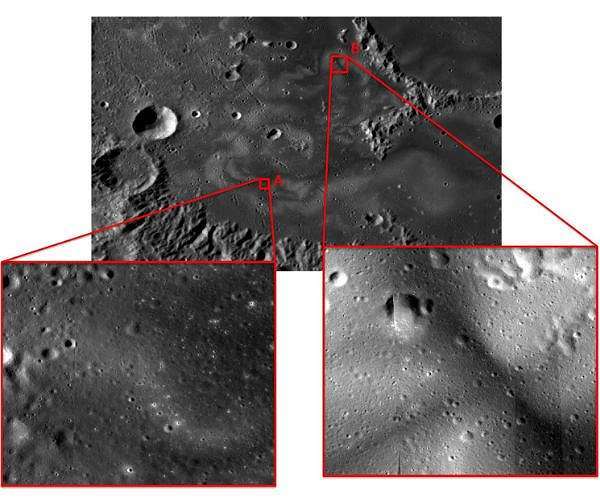31.08.2023

A new study of Lunar swirls shows evidence of highly mobile regolith on the Moon, according to a team of PSI scientists led by Deborah Domingue.
Swirls are enigmatic albedo (light reflection) patterns on the lunar surface associated with local magnetic anomalies. The processes involved in their formation have been examined and debated since their discovery. The most popular idea is shielding of the surface from solar wind radiation by the associated magnetic anomaly. This explains the swirling pattern, as shielded material would be brighter than radiated materials outside the magnetic field. However, the spectral properties don't always match what is expected of shielded materials.
Another hypothesis is that dust that is electrostatically levitated is preferentially segregated and trapped by the magnetic field. The electrostatically-levitated lunar dust is the smallest size portion of lunar dust , which on the Moon is intrinsically made of brighter minerals than the larger sizes which are more difficult to electrostatically move.
The darker dust includes small inclusions (tiny pieces of material inside a grain made of a different material than the grain itself) of nanometer-scale iron, which is thought to be magnetically separated and deposited in the dark areas of the swirls. Ironically, one way to produce this nanometer-scale iron is by solar wind radiation.
So, which is it? One approach to answering this question is to examine the texture of the surface. The texture is the soil grain-to-grain (or in this case dust-to-dust) roughness and porosity and the structures within the grains (such as inclusions). A group of PSI scientists examined the texture of the surface in a region in Mare Ingenii using the tools of photometric analysis.
Photometric analysis is based on how material scatters light and how those scattering properties change as the illumination (angle of the sunlight to the surface) and viewing (position of your spacecraft) geometries change. What they discovered is that the grain-to-grain roughness was similar across the swirl region, but that the soil in the dark lanes have grains with a more complicated structure.
In addition, they also show that the composition between the bright and dark areas are different, following the expectations from dust collection and segregation.
"The evidence, which includes recent correlation of topographic lows with the bright areas of the swirls, tells a story that more than one process is involved in their formation", said lead author Deborah Domingue. "We definitely see evidence that the bright areas are less radiated, but this doesn't explain all the properties of the swirls. Something else is operating, and the textures suggest dust collection and segregation are part of the tale."
PSI scientists John Weirich, Frank Chuang, Amanda Sickafoose, Samuel Courville, Eric Palmer and Robert Gaskell also worked on the research.
Quelle: SD
